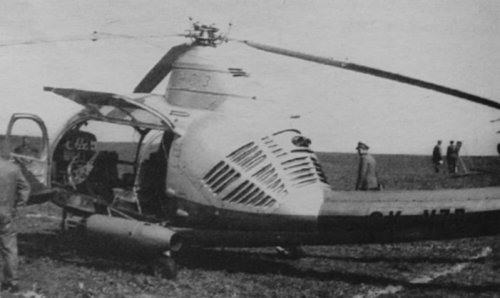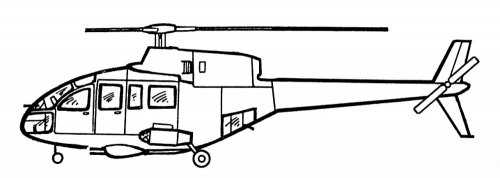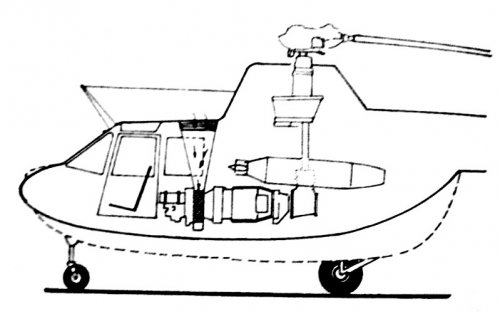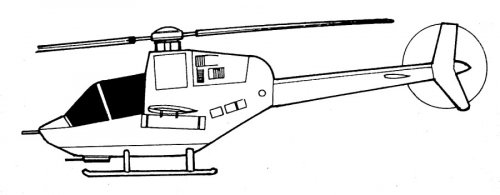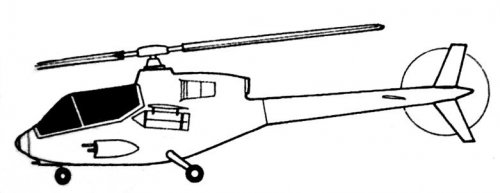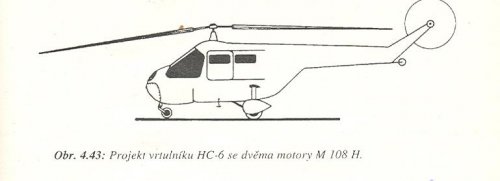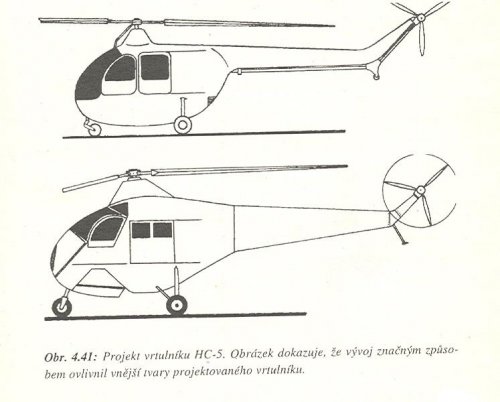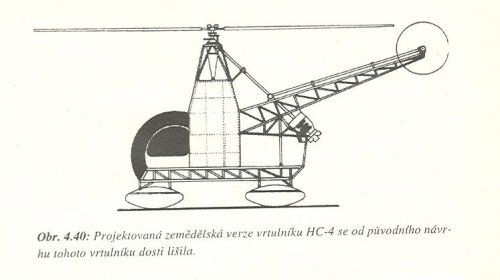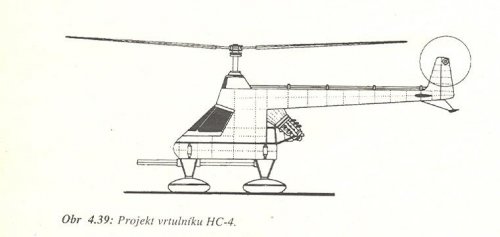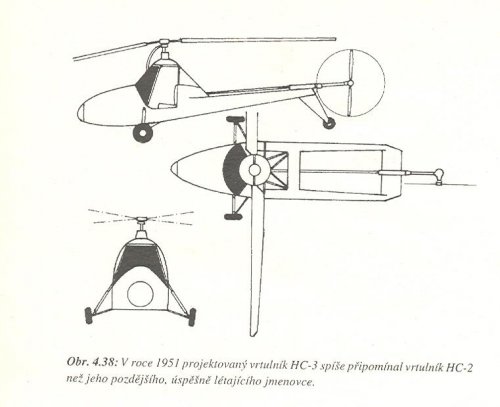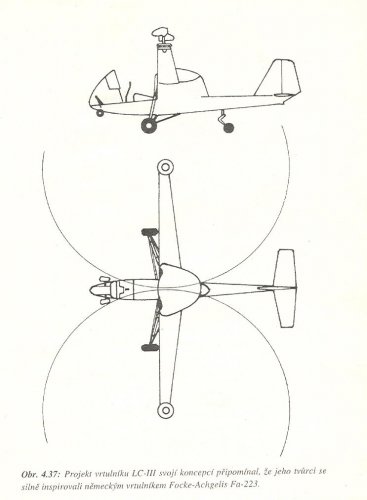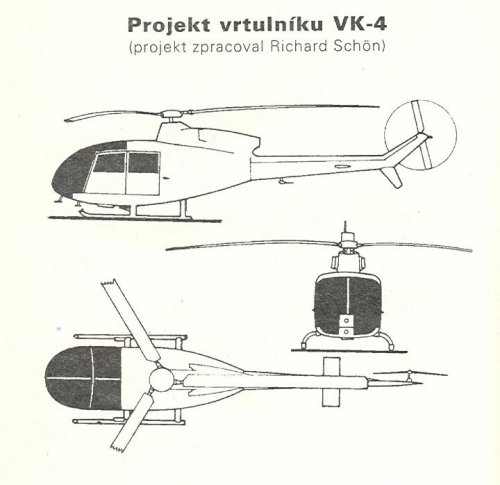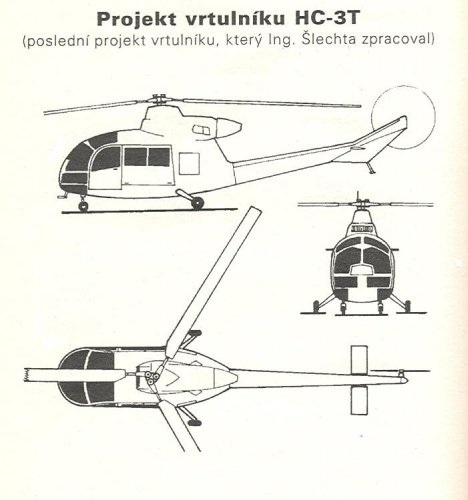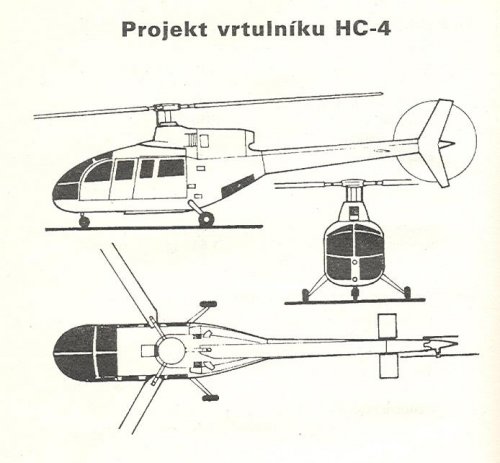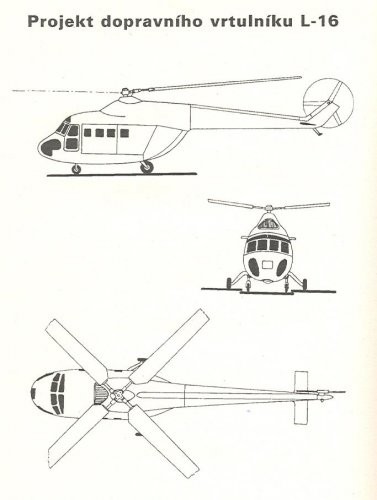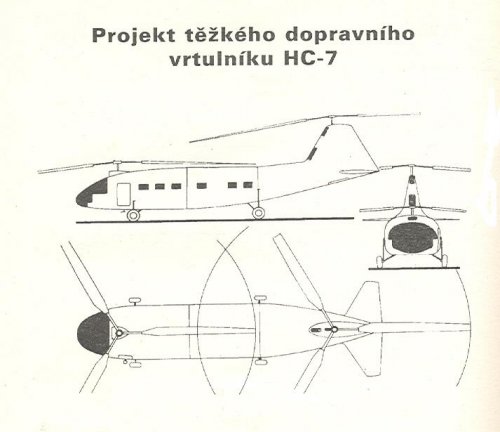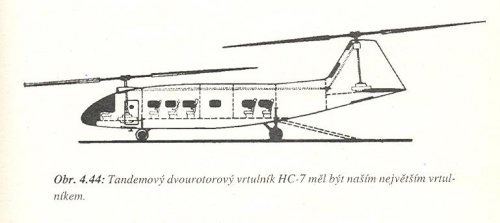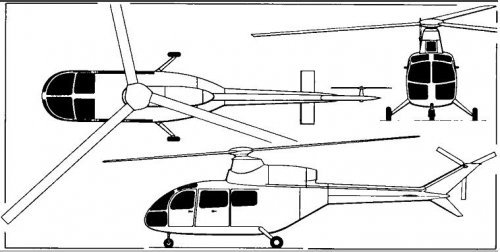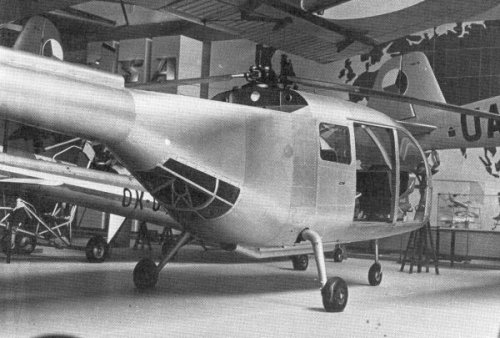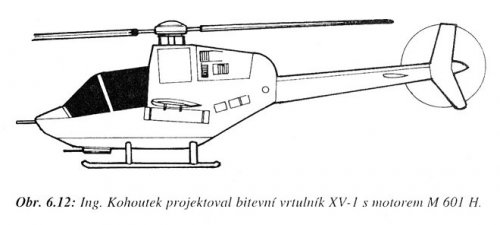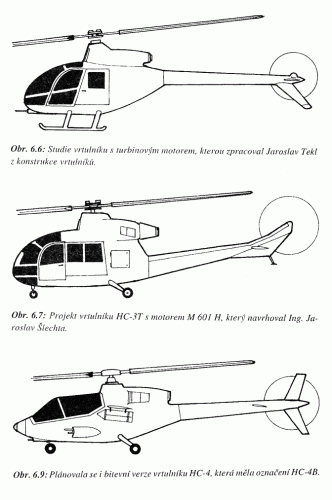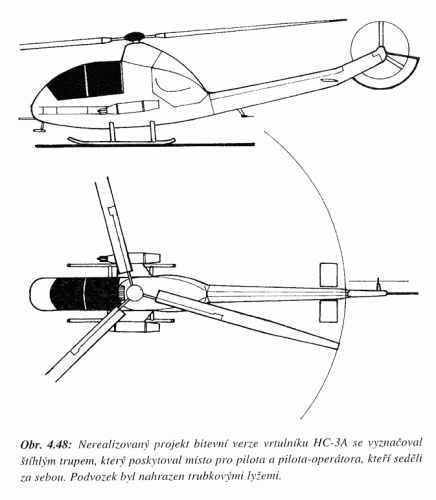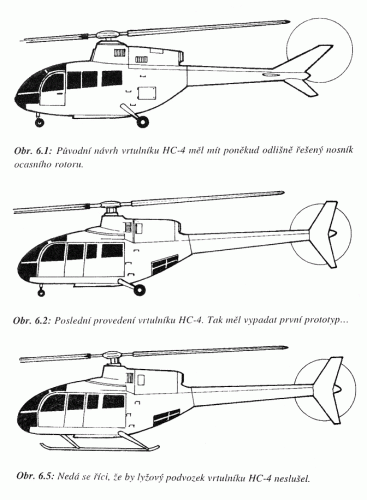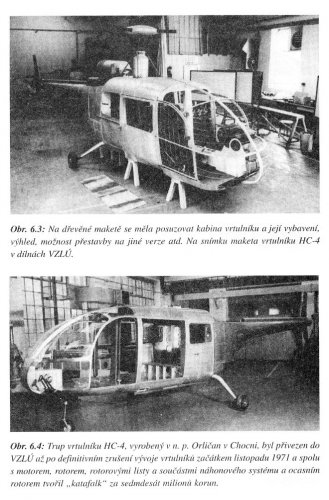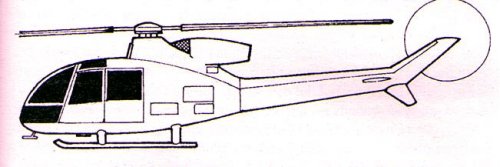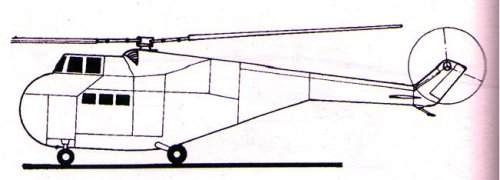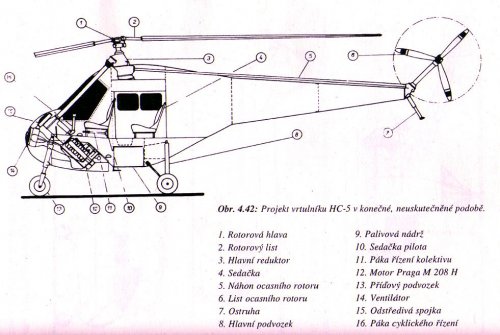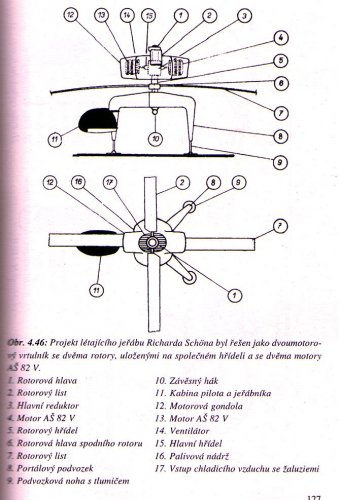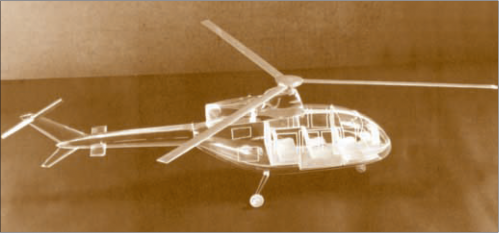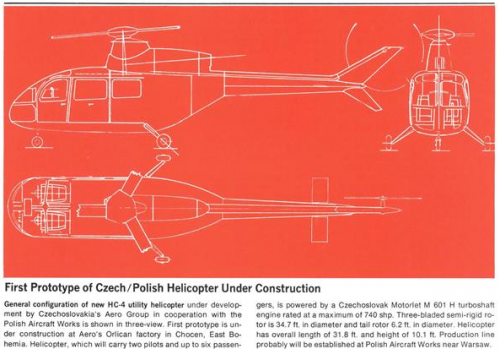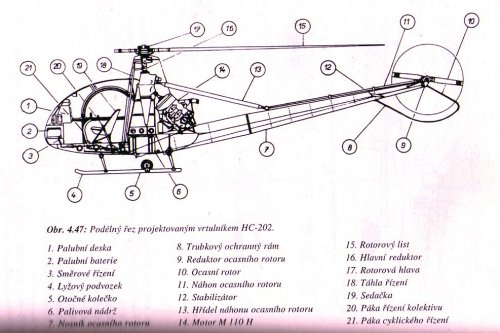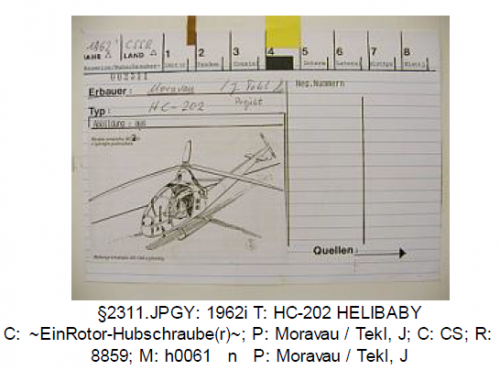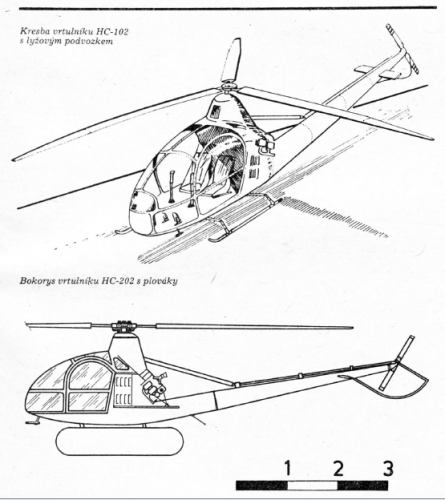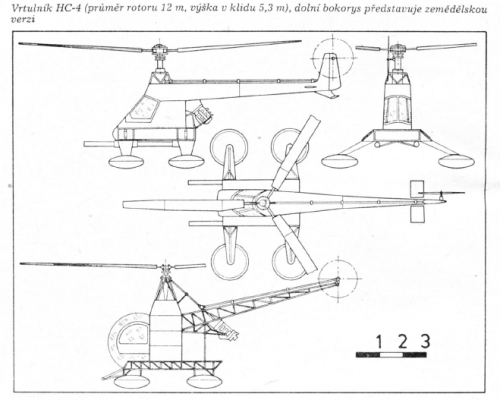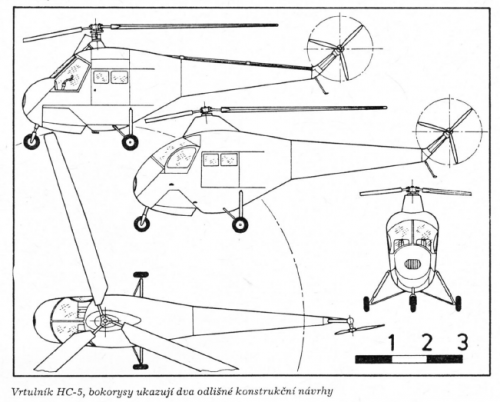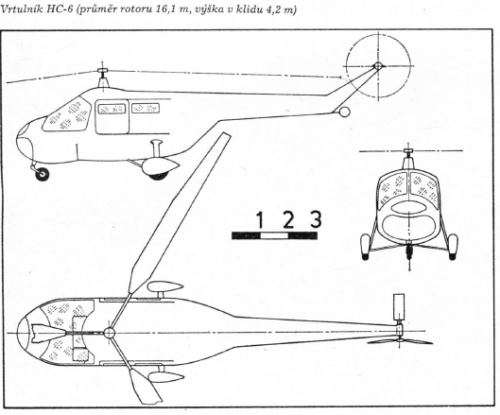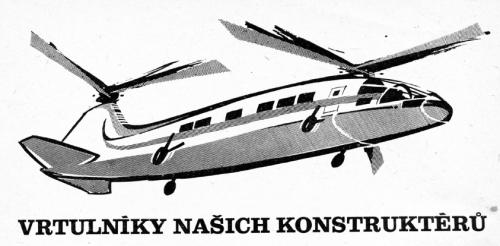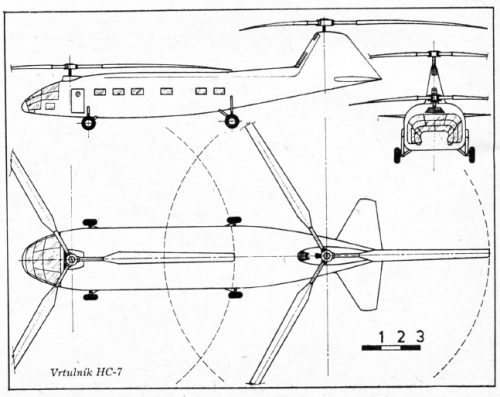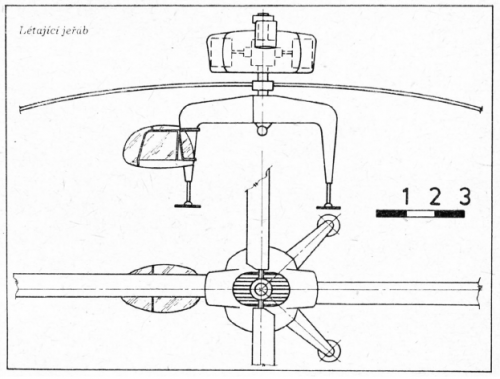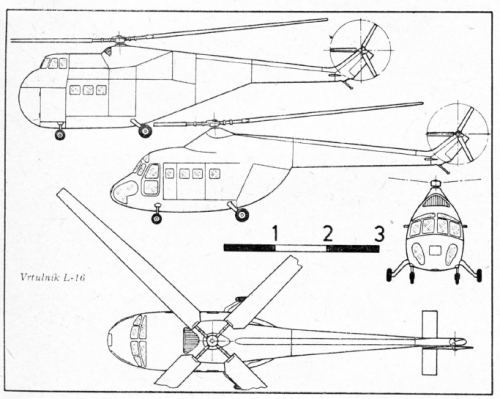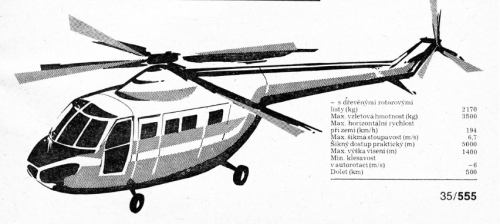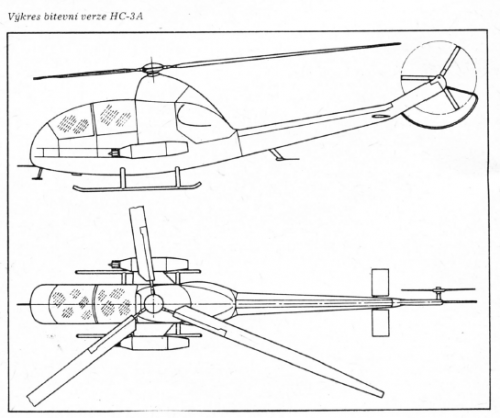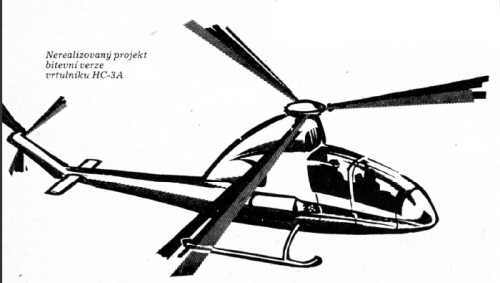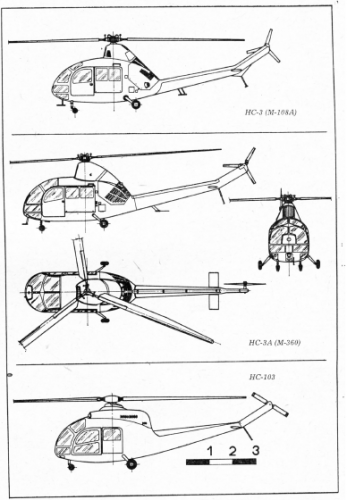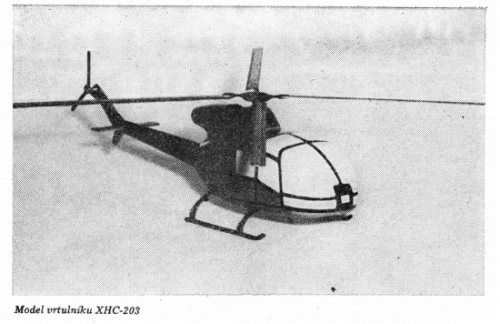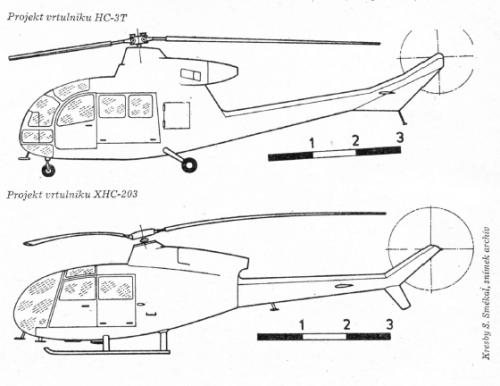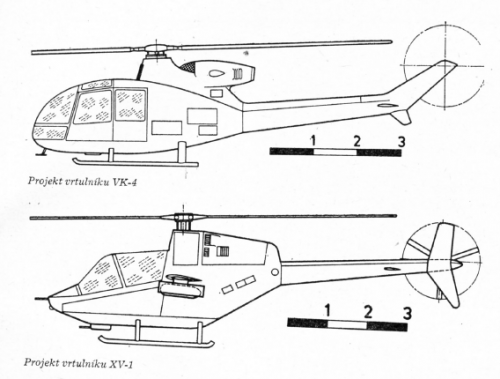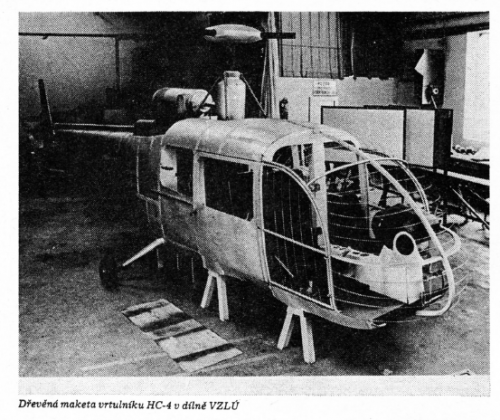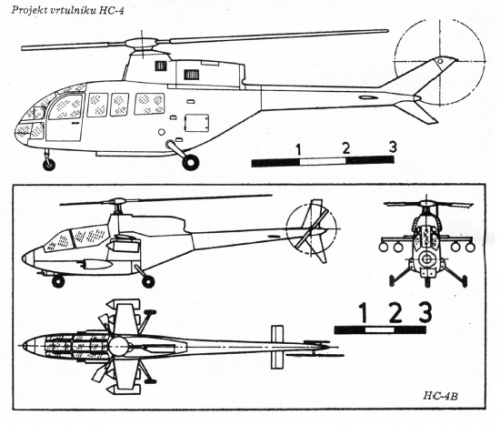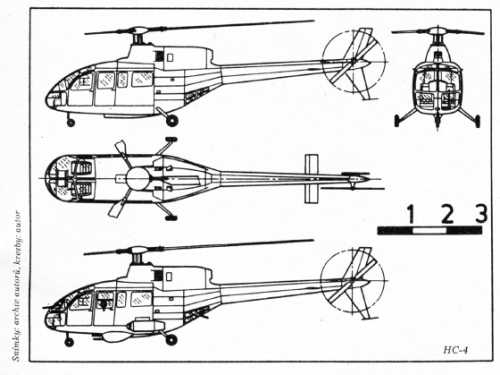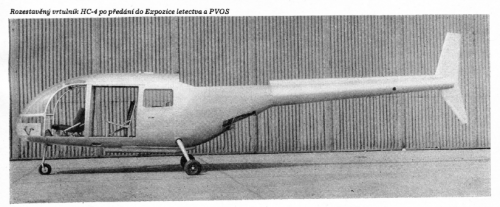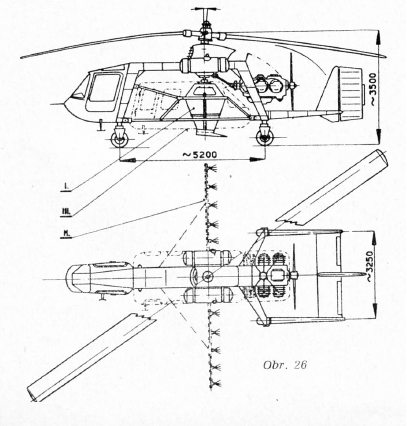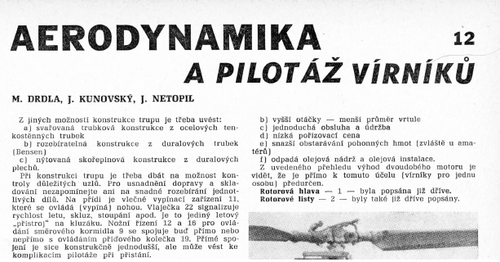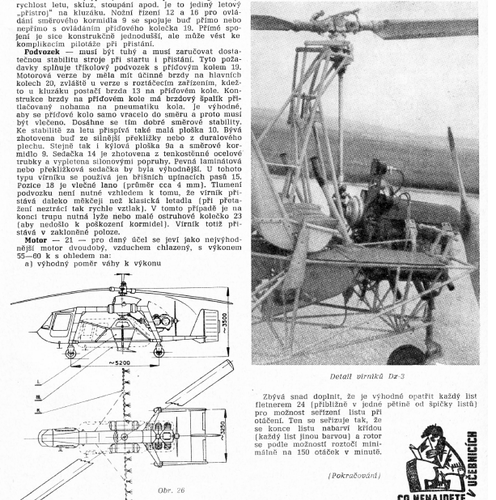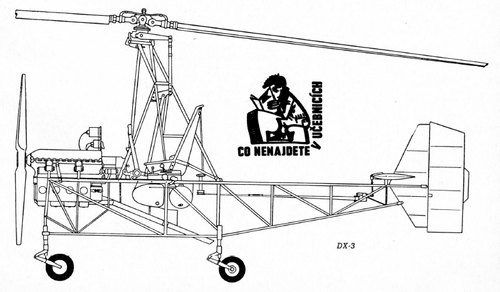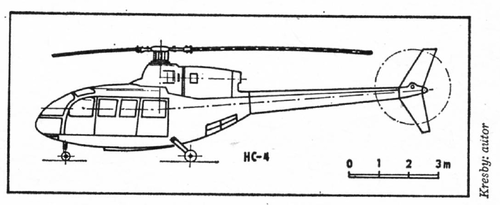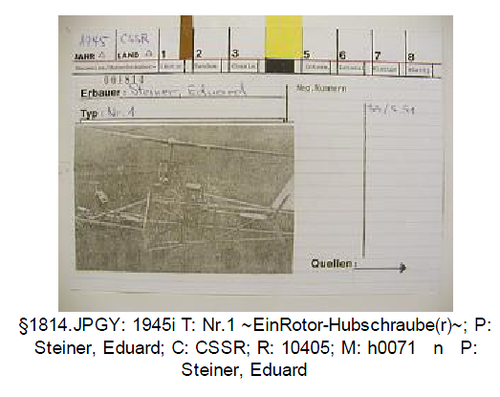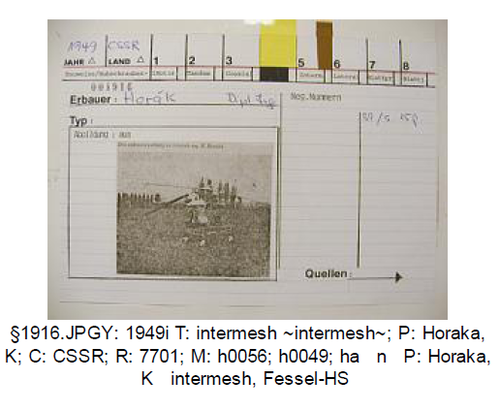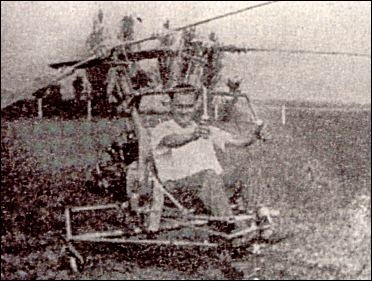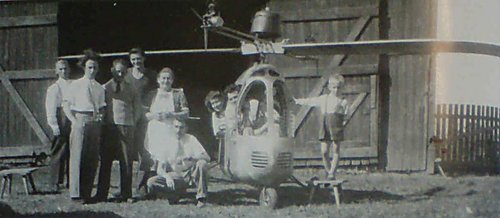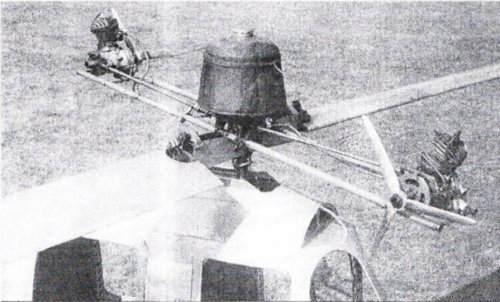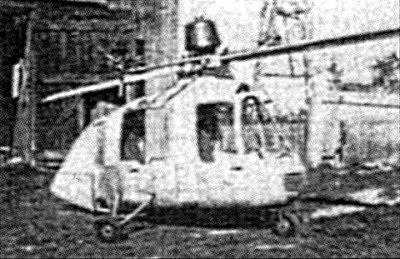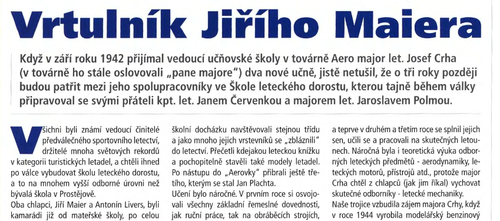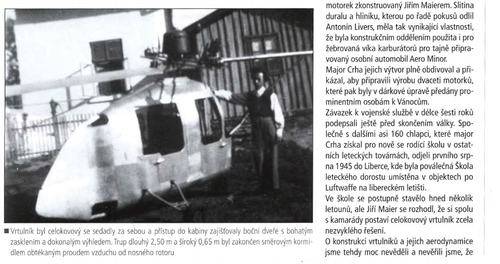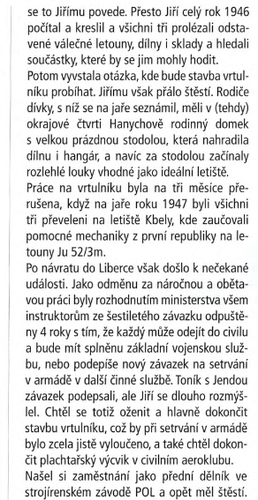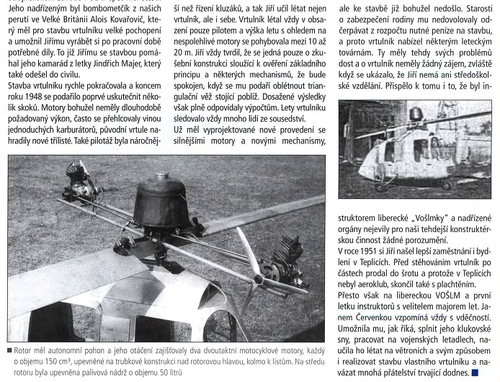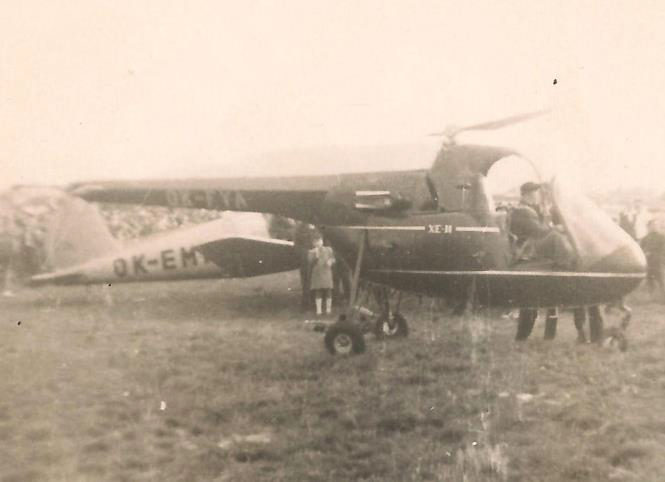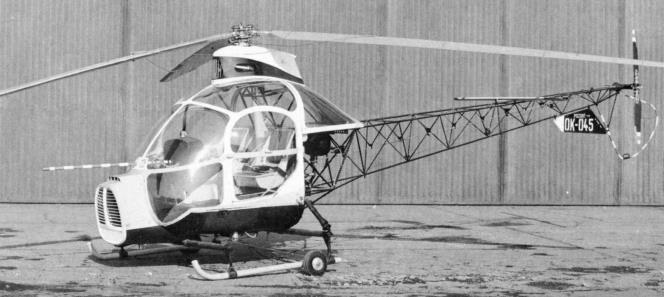Matej
Multiuniversal creator
Interesting projects from czech archives. In secod half of the 50s Ing. Jaroslav Schlechta started to materialize his idea about militarized version of light utility helicopter HC-3. First was HC-3A (OK-VZB) with M 360 RF engine (rebulit soviet AI 14 VF - 221 kW). It had on every side rocket system with unguided rockets: early time there were two three tubes systems with 130 mm rotary stabilised JRRO-130 rockets, later replaced by two sixteen tubes systems. Helicopter weighted 1520 kg, achieved maximal speed 168 km/h and was revealed in Warsaw pakt military exercise "Vltava" in 1966.
A few years later Richard Schon derived improved version HC-3B that differed with thinner fuselage, two seat cockpit (one after another), ski gear, aerodynamic cover of rotor head and on the bottom of the fuselage machine gun.
HC-4 originated in 1967 - 1971 era and was made by Jaroslav Tekl. It had two two-barrel machine guns in the front part. During targeting it was necessary to move the whole helicopter. Third gun was placed on circular hanger in the rear part and was able to fire backwards, down and to the sides.
HC-4B also from Jaroslav Tekl, dated in 1968. Attack/reccon helicopter, armed escort or CSAR. Fuselage was only 0,9 m thin, armour able to defend 8 mm bullets, first cockpit place for weapon officer, second for pilot. Equipped with M 601 H engine (405 kW), empty weight 1050 kg, useful load 950 kg (weapons 400 to 600 kg), rotor diameter 10,6 m, max. speed 240 km/h, range 200 - 400 km.
A few years later Richard Schon derived improved version HC-3B that differed with thinner fuselage, two seat cockpit (one after another), ski gear, aerodynamic cover of rotor head and on the bottom of the fuselage machine gun.
HC-4 originated in 1967 - 1971 era and was made by Jaroslav Tekl. It had two two-barrel machine guns in the front part. During targeting it was necessary to move the whole helicopter. Third gun was placed on circular hanger in the rear part and was able to fire backwards, down and to the sides.
HC-4B also from Jaroslav Tekl, dated in 1968. Attack/reccon helicopter, armed escort or CSAR. Fuselage was only 0,9 m thin, armour able to defend 8 mm bullets, first cockpit place for weapon officer, second for pilot. Equipped with M 601 H engine (405 kW), empty weight 1050 kg, useful load 950 kg (weapons 400 to 600 kg), rotor diameter 10,6 m, max. speed 240 km/h, range 200 - 400 km.

